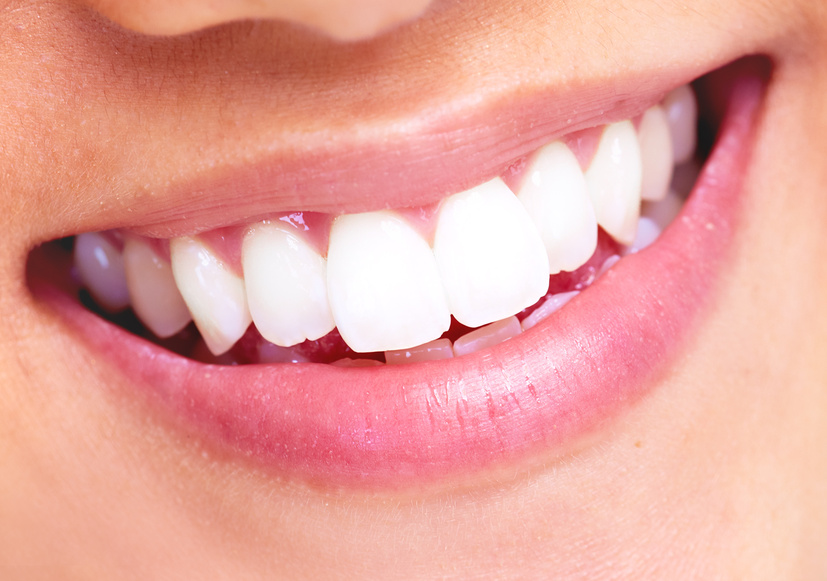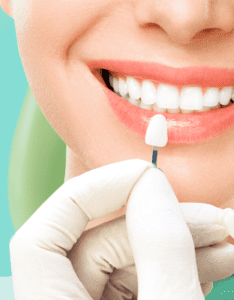You have several choices available when it comes to deciding how you want to whiten your teeth. Safe and effective teeth whitening choices can be found with in-office applications, dentist-supplied products for use at-home, and over-the-counter (OTC) whiteners.
But will you get the same clean, white look with everything? If so, does it matter whether you spend $10 or $1000? You deserve to know exactly what each option provides so that you can make the most informed decision.
Carbamide peroxide or hydrogen peroxide?
The biggest difference between store-bought teeth whitening products and in-office products are that in-office products use Carbamide Peroxide instead of hydrogen peroxide as the main whitening agent. It is more powerful and gets better results with surface stains. But it also means a difference in being able to get at and clean intrinsic stains on your teeth as well.
What does intrinsic and extrinsic mean with teeth?
Basic hydrogen peroxide only works on extrinsic stains. If you drink coffee, wine, or soda, they can stain the outer layer (or the enamel) of your teeth. Smoking is another habit that can cause extrinsic, brown stains.
Intrinsic stains come about when the inner portion in your tooth, or the dentin, is dark or yellow. These stains are usually from issues in your childhood, illness, or injury. If your water had too much fluoride in it as a kid, or if your mom took certain antibiotics during pregnancy, you might have intrinsic staining. It could also be from a fall or other impact to your teeth, such as with a sporting injury.
It depends on the type of staining you have and the results you want to achieve when it comes to which product may be best for you. In-office whitening applications are the best choice for intrinsic discoloration. Home products will not make much of a change. But for coffee or other surface stains, you may be pleased with an OTC product.
Teeth whitening products directly available to consumers
OTC options include a variety of products from toothpastes to paint-on gels. For products that are over the counter, a voluntary program called the ADA Seal of Acceptance helps you know quickly which are both safe and effective for whitening when used as directed. Here are some ADA approved toothpastes and whitening strips, for example. Toothpastes primarily rely on abrasives to remove surface stains. Though some also contain low levels of hydrogen peroxide as well. Whitening strips only use hydrogen peroxide for bleaching teeth.
What teeth whitening products are available at the dentist?
Teeth whitening methods approved and supervised by your dentist might include at-home options and in-office options. These are considered professional whitening products when they come from your dentist. As such, they are not eligible for the ADA Seal of Approval. Remember, that program is only for OTC products. However, if you opt to have your teeth whitened at the dentist’s office, you’ll find the application is more controlled, easy to use, and produces nicer final results.
How does at-home whitening provided from a dentist’s office work?
One choice for teeth whitening at home is to use a whitening tray. When you are in the dentist’s office, your technician will make a customized tray to fit your teeth comfortably. They also make sure that only a limited amount of whitening gel comes into contact with the gingiva or your gums.
These home applications use peroxide concentrations of between 10 to 38% carbamide peroxide. The concentration determines the amount of time you might use the trays. It could be anywhere from 2 to 10 hours each day for 6 to 24 days. When your dentist does the application in the office, he or she may use a special light which can accelerate this process.
Can everyone whiten their teeth?
Experts do not advise teeth whitening for all patients. If you have tooth-colored restorations like crowns or bridges, whitening methods will not work for you. Also, the American Academy of Pediatric Dentistry does not advocate for cosmetic bleaching for children who have mixed dentition. This is because the teeth will not match when permanent teeth come in.
How much is cost a factor?
You might need to consider the cost of your teeth whitening options in making the best decision for you. OTC products are the lowest cost choice over approaches provided by your dentist, but you have to take into account that they take much more time, and might not work as effectively.
One study found that OTC bleaching took 16 days to achieve the same results as a seven-day home tray option and as a one-day procedure in the dentist’s office. So, if you absolutely want to save time, the extra cost may be worth it in your situation.
More than cost as a factor is safety. Make sure you select safe products and follow the instructions precisely to avoid any damage. The peace of mind of having a dentist or technician nearby may sway you toward in-office whitening procedures.





